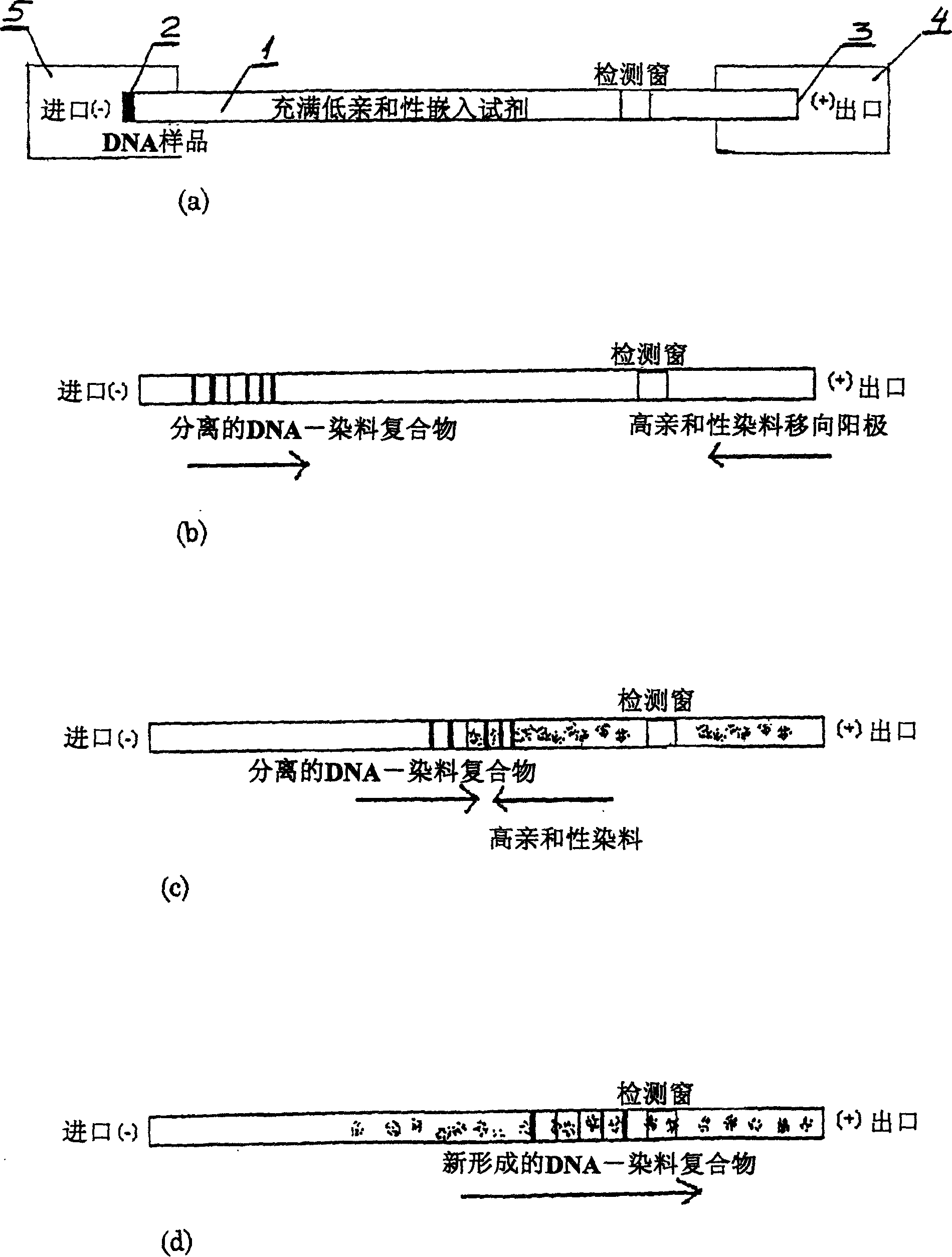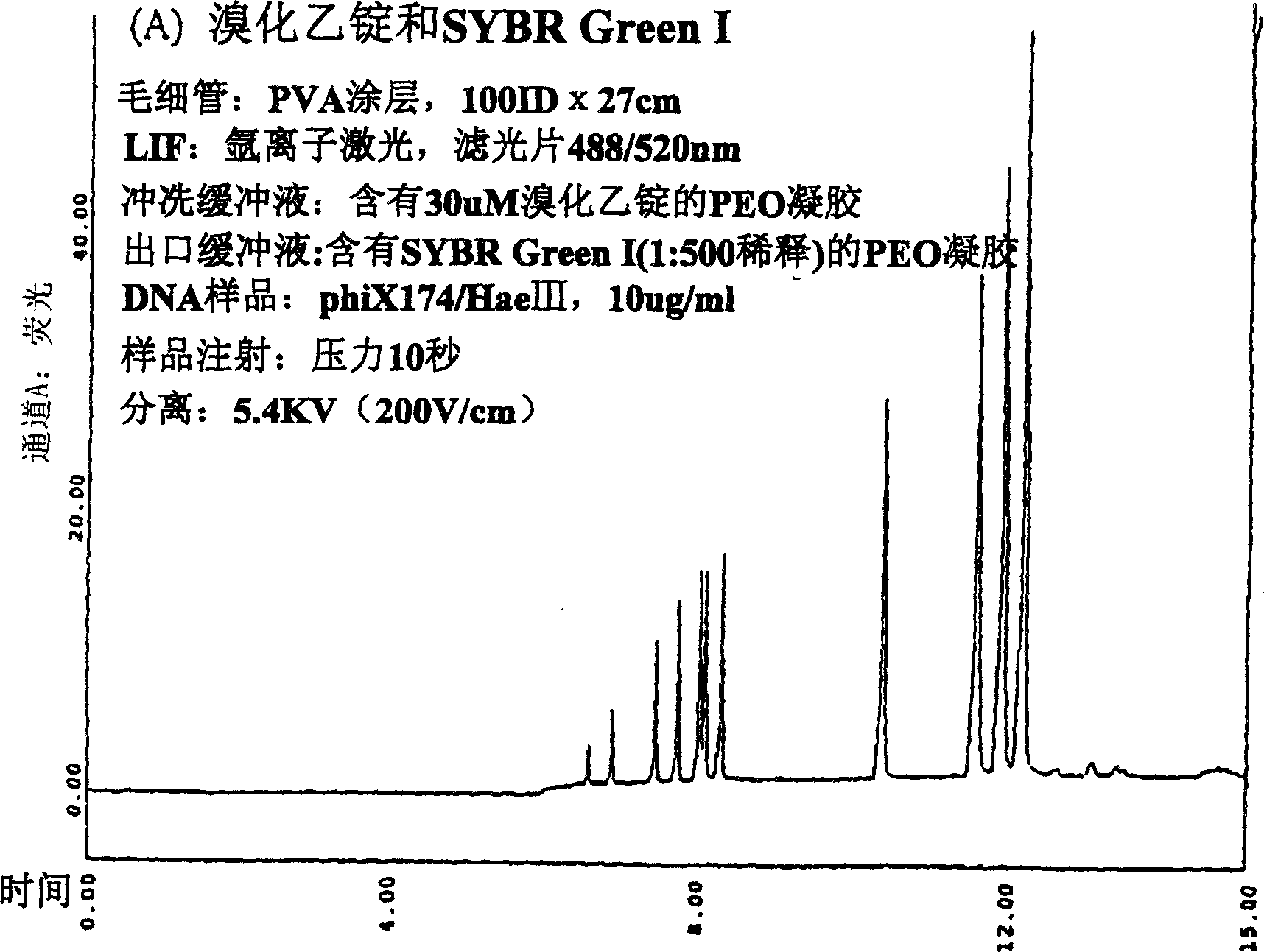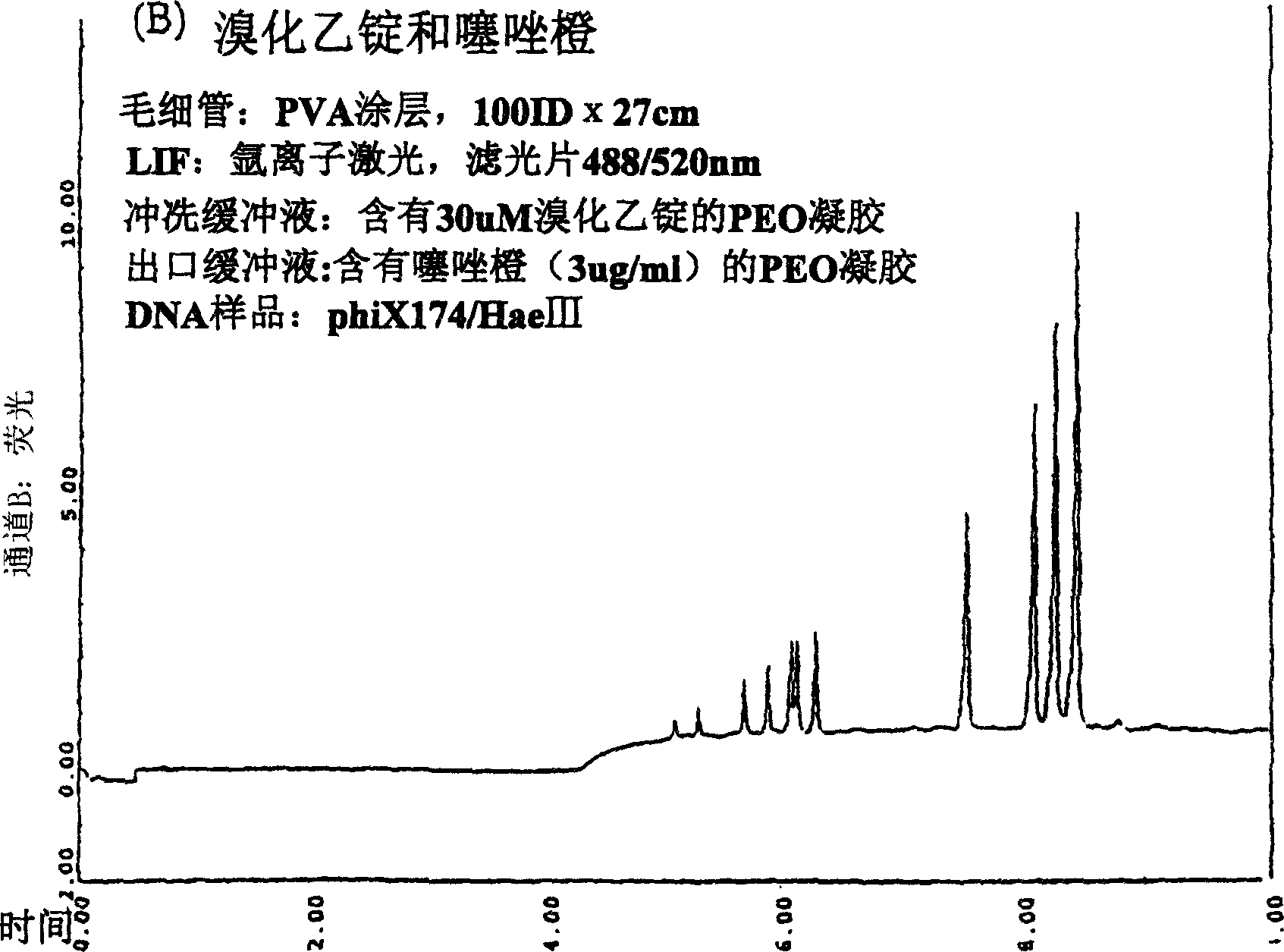Nucleic acid separation and detection by electrophoresis with a counter-migrating high-affinity intercalating dye
An electrophoretic separation and affinity technology, applied in the field of electrophoretic separation and detection of nucleic acids, can solve the problems of high cost, inability to provide resolution, low affinity and low sensitivity of DNA detection, and achieve the effect of convenient sensitivity and resolution
- Summary
- Abstract
- Description
- Claims
- Application Information
AI Technical Summary
Problems solved by technology
Method used
Image
Examples
Embodiment 1
[0092] CE settings
[0093] A capillary (Polymicro Technology, Tucson, Arizona) with an inner diameter of 100 μm and a length of 27 cm was used in the following study. The capillary is coated with polyvinyl alcohol (PVA) before use. EB, SYBR Green I and TO were purchased from Molecular Probes (Eugene, Oregon).
[0094] The gel matrix was prepared with polyethylene oxide (PEO) purchased from Aldrich Co. (Milwaukee, Wisconsin). In short, the preparation of PEO gel is as follows. At room temperature, 2.5 g PEO (average molecular weight 4,000,000) and 2 g PEO (average molecular weight 900,000) were slowly (overnight) added to 445 ml of water under stirring. Then, 50 ml of 250 mM MOPS-Tris pH 7.55 and 325 μl of 10% NaN3 were added to the above solution. The resulting gel is stored at room temperature.
[0095] PEO gel and EB (final concentration of 30μM) were mixed to prepare washing buffer. The PEO gel was mixed with SYBR Green I (1:500 dilution) to prepare the outlet buffer. In anoth...
Embodiment 2
[0099] DNA analysis by CE-LIF using two intercalating dyes
[0100] The capillary is filled with gel buffer containing PEO gel and EB. The outlet electrode vial (anode) is filled with outlet buffer containing PEO gel and SYBR Green I or TO. The DNA sample is injected into the capillary from the cathode. After a voltage is applied between the cathode and the anode, a DNA-EB complex is formed and moves toward the anode. At the same time, SYBR Green I or TO molecules migrate from the anode to the cathode in the opposite direction due to their positive charge.
[0101] Once the anti-migrating SYBR Green I or TO molecules come into contact with the isolated DNA-EB complex, compared with EB, because the anti-migrating molecules have higher DNA affinity, they replace the EB in the DNA complex. The result is the formation of a new DNA-SYBR Green I or DNA-TO complex. Since the absolute value of the DNA charge is greater than SYBR Green I and TO, the total charge of the new complex is negat...
PUM
 Login to View More
Login to View More Abstract
Description
Claims
Application Information
 Login to View More
Login to View More - R&D
- Intellectual Property
- Life Sciences
- Materials
- Tech Scout
- Unparalleled Data Quality
- Higher Quality Content
- 60% Fewer Hallucinations
Browse by: Latest US Patents, China's latest patents, Technical Efficacy Thesaurus, Application Domain, Technology Topic, Popular Technical Reports.
© 2025 PatSnap. All rights reserved.Legal|Privacy policy|Modern Slavery Act Transparency Statement|Sitemap|About US| Contact US: help@patsnap.com



